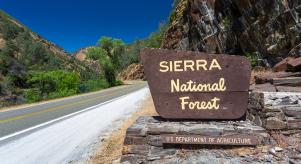
Everest’s deadly season
There’s a queue of people standing in a human traffic jam on the side of the world’s tallest mountain. They’re standing 8,000 meters up, where there isn’t enough oxygen to sustain the human body and where the greatest number of fatalities happen. Tightly packed together, it’s hard to move forward or backwards. As they make their way towards the summit, climbers have to step over the bodies of those who have died in their attempts. It’s no surprise that 2019 has become one of Everest’s deadliest seasons.
It normally takes two months and thousands of pounds to climb Everest, with a narrow window (usually between seven and 12 days, but this year, reduced to five) in which you can reach the summit before the climbing season ends in June. The question of whether you make it or not can come down to the weather. But beyond that, there’s the risk that comes to your life when you attempt this climb.
Over 300 people have died trying to climb Everest and the last time there wasn’t a known death on the mountain was 1977, when only two climbers reached the summit. As the bodies of those who die are hard to carry down, they’re often left there, visible to those who come after them.
Everest has become a ‘trophy’ climb that more and more people want to achieve.
This year, 11 people have died in 10 days. It’s a staggeringly high death rate that hasn’t been seen since 2015 when there was an avalanche. The fatalities this time have mainly been due to altitude sickness, exhaustion and other illnesses that are thought to have been caused by the conditions on the mountain: the overcrowding, the delays and the sheer number of people attempting to reach the summit. When the risks are so great, why are so many literally queuing up to try it?
Everest has become a ‘trophy’ climb that more and more people want to achieve. This year alone, 381 permits have been issued by the Nepalese government—a record number— and bargain operators offering lower prices have meant that it’s become more affordable, too. The cheaper tour operators have lower standards and place less emphasis on previous experience than the more expensive operators do, meaning inexperienced climbers have been allowed to attempt to scale the mountain. The result has meant overcrowding and queues of people waiting as they all attempt to take advantage of the same window to make the summit.
British climber Robert Haynes Fisher described the overcrowding on Instagram. He wrote that someone had been found dead in their tent, another lost (presumably from a fall) and that the crowds had caused him to change his own plans to summit the mountain. Suffering from altitude sickness, he was descending Everest, but he died a few days later from exhaustion.
Climbers reported watching people jostle to get the best possible spot—so they could take a selfie...
The delays have meant that climbers have been left standing in an area known as the death zone (so-called because there isn’t enough oxygen to sustain life and cells in the body begin to die). It’s an area it’s important to move through at pace; the majority of people can spend only minutes there without extra oxygen supplies and the lack of air can cause everything from impaired judgement to severe altitude sickness, strokes and heart attacks. Yet this year, people have been left standing there for up to 12 hours. Even for those that make the summit, the long waits can mean climbers run the risk of running out of oxygen on the descent, which is what several climbers were attempting when they lost their lives this year. Even experienced mountaineers have died.
For those who do face injury, they may find little help. Summit fever—the compulsion to make the top at all costs— can affect climbers’ judgement and mean they have less empathy for those they see in trouble, taking the decision to reach the summit over stopping to help those in need. And there is little chance of outside rescue as the area’s hard to reach by helicopter.
For those who made it to the summit, the conditions didn’t get any better. Climbers reported watching people jostle to get the best possible spot—so they could take a selfie. The closer to the edge, the better the view. Many of them were said to be obviously inexperienced, which added to the danger, for themselves and those around them.
The risk to life hasn’t been enough to stop people from attempting the summit, though, even when the evidence is overwhelming. Roxanne Vogel (who completed her climb in a record 14 days) described seeing four bodies on her ascent, while others have reported seeing the dead in their tents and even people climbing over the body of one climber to reach the summit, who was strapped to the safety ropes.
Ultimately, many of the fatalities this year could have been avoided if the conditions were better and this has led people to call for change. Limiting the number of permits given has been the start for many, while others have pointed to the trekking companies that are enabling climbers that aren’t experienced of fit enough to take the mountain on. But Nepal’s tourism board denies that the delays have been the cause of death and has no plans to limit the number of permits available. So if access is still available to make the climb, the question becomes, should we stop climbing Mount Everest to prevent another season like 2019?




